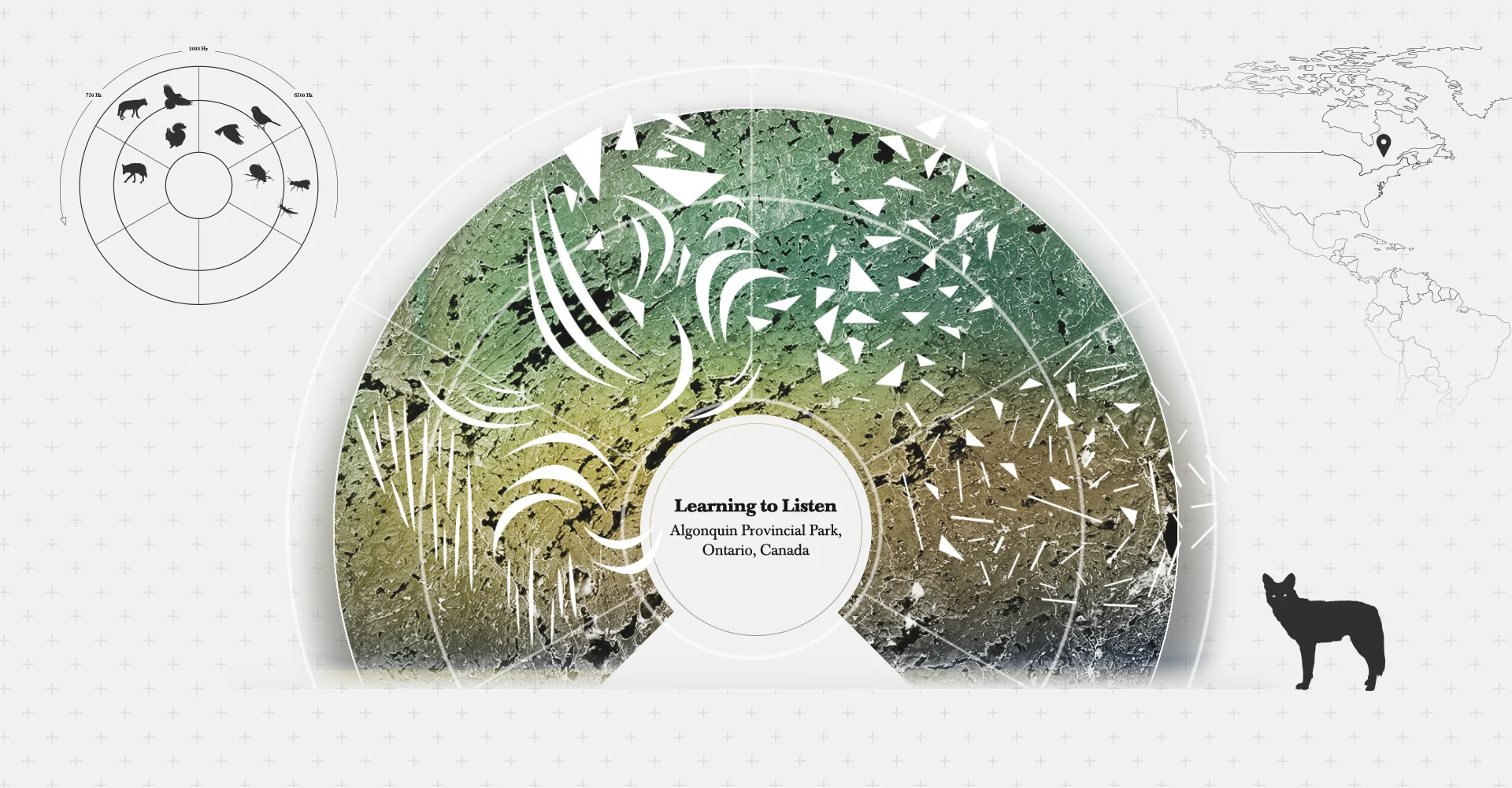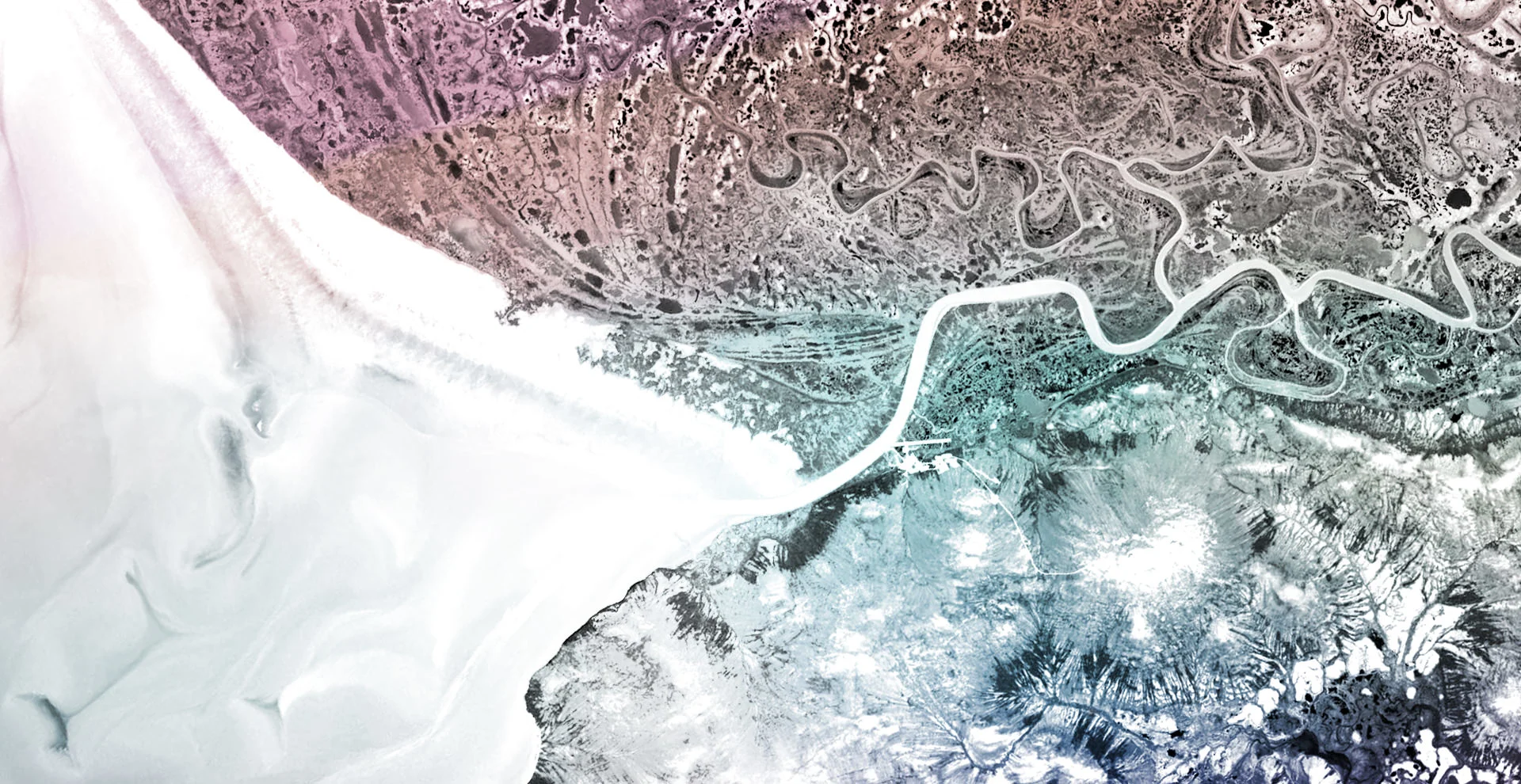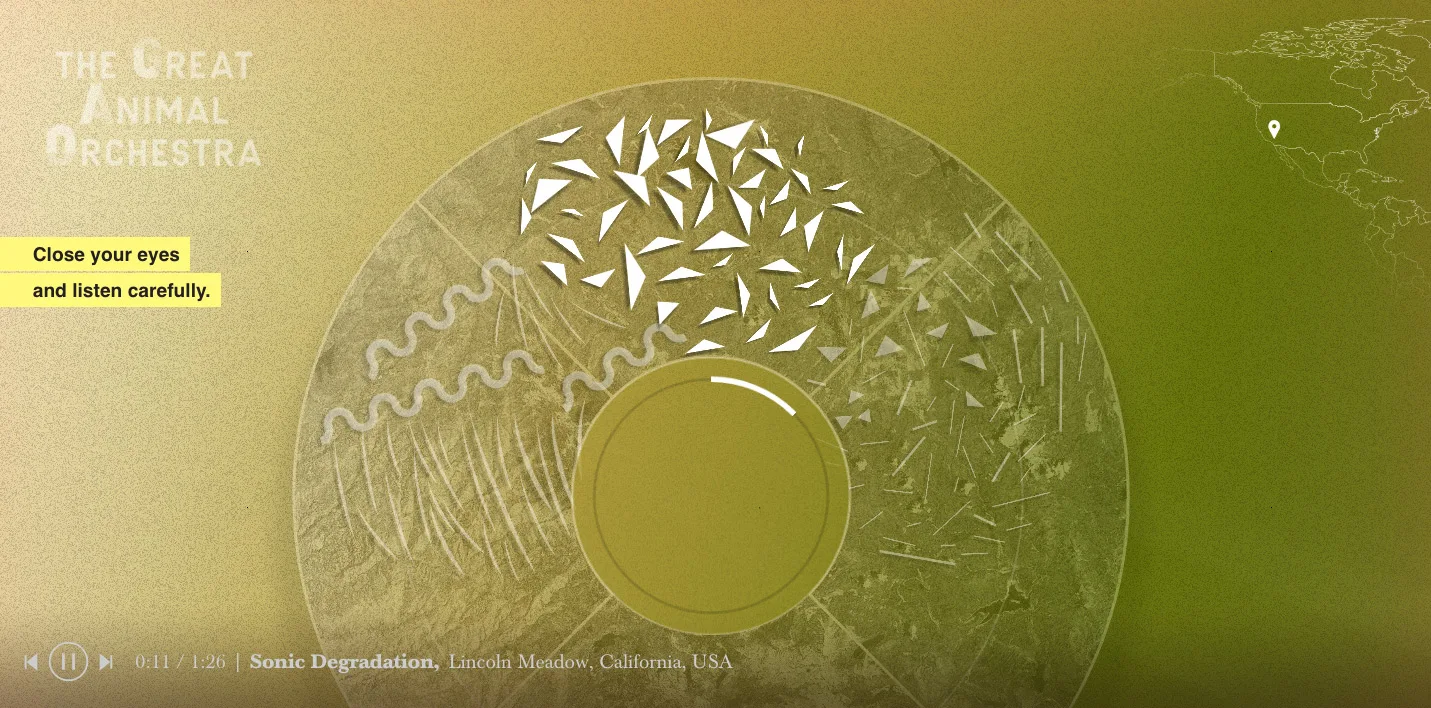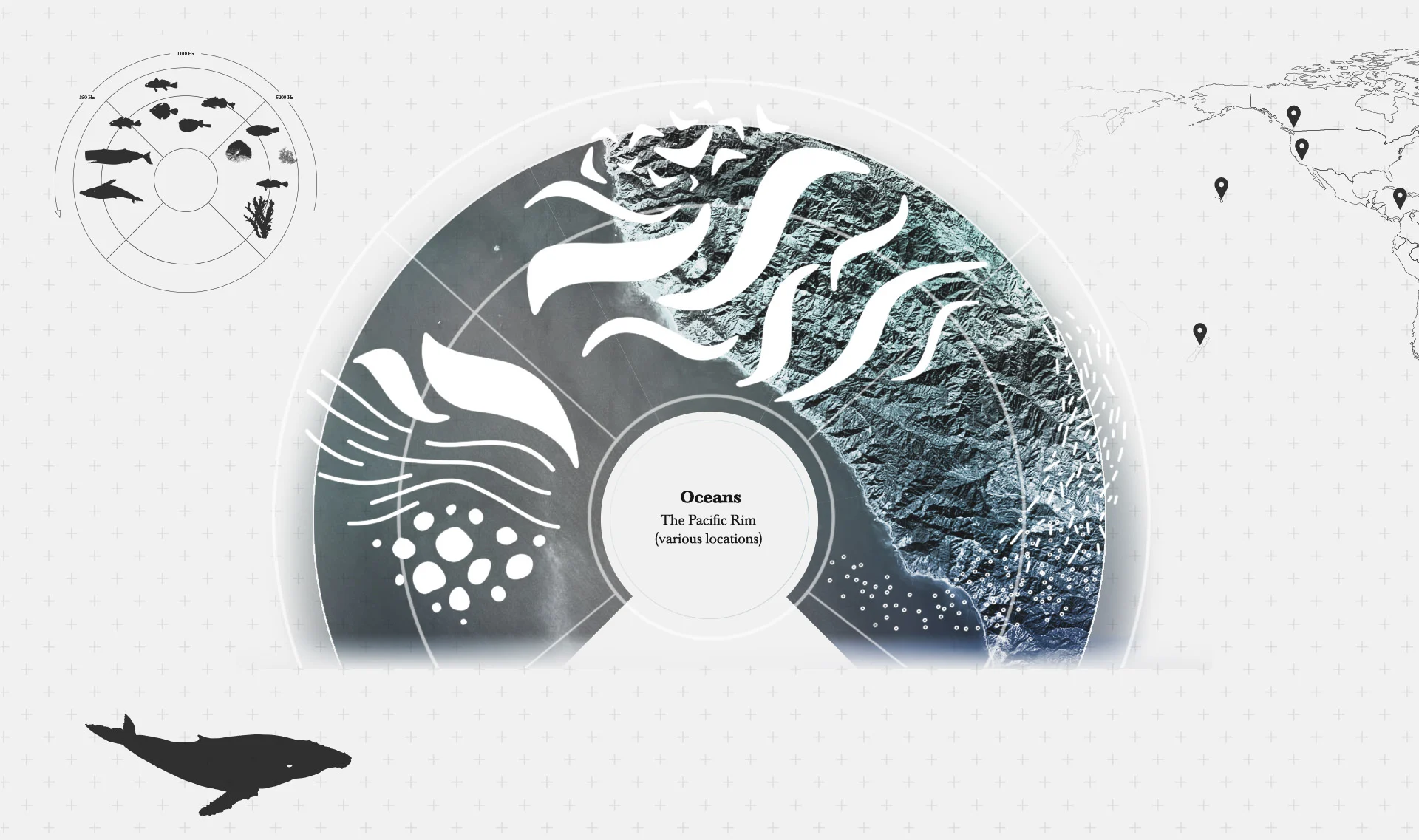
Think of the animal kingdom, and you probably think visually – of bright colors, stampeding spectacles or the wondrous sights of a David Attenborough documentary. The Great Animal Orchestra wants to start thinking about sounds.
The website was developed alongside the exhibition at the Fondation Cartier pour l’art contemporain in Paris which highlights musician Bernie Krause’s recordings of animal life from the past 50 years. You can browse through different soundscapes from the Arctic, an African dry-forest, the ocean and so on, all taken from Krause’s extensive recording archive from these sites.

On the website, Bernie Krause’s soothing voice leads you through the unfamiliar and wondrous sounds of the animal kingdom. He is like the Bob Ross for sound, patiently taking you by the hand and showing you the natural world we have become so estranged from.
At first Bernie started to record in the wild because it made him feel good. But as his library grew throughout the years, he noticed how the natural world was transforming. “Many of the sites I was recording in were changing very quickly as a result of human encounters with those habitats. For instance, wetlands would be drained for a parking lot, for buildings or for a highway. Forests would be cut down and all of the animals would be gone in that area,” Bernie explains.

“My library was actually showing how things were changing, not only from human endeavour but also because of climate change. We can see the difference in seasons now. For instance, in our area in Northern California, spring occurs two weeks earlier than it did 20 years ago.”
And so one of the goals of the website is to tell this story of change and what humans are doing to the world around them. It is about reconnecting young people with nature.
Katherine Krause, Bernie’s partner explains: “We realised there’s no reconnection for a lot of people because they haven’t really been connected to the wild in the first place. They may very well get to know nature through the digital world. So if the digital world is a portal to the outdoors, then what better thing to share our love of the natural in such a way that people can experience what it is like without human induced stuff in it?”
“If it just opens people’s ears a little bit, if people just go outside and be astonished by the sounds of the world, we’re happy. It’s what I like to call a small Bernie Krause moment,” Katherine continues.
What is impressive about the narrative is that it is told unlike any other story about climate change. Instead of telling you what you are listening to, you have to discover for yourself: “Very little human language is used to describe the story. Everything is told by the animals – it’s way cool,” Bernie explains.

What’s more is the way the experience, offline as well as online, is audio-led instead of the more traditional visually-led set up of exhibitions.
“The perception from many in the scientific community is that sound is not important. We are a visual culture. Normally when people go to a museum, they’re standing in front of a graphic element for 15 to 20 seconds and then they move on to the next,” Bernie says.
Instead, the team decided to completely focus on the recordings and to design everything around that.
A big challenge was to illustrate sound. “What was really a breakthrough in the design of the web app, was to be able to go from an image of a bird to a graphic element that wasn’t so figurative or literal, yet evoked these sounds that you were trying to describe,” Katherine says.
“It’s about suggesting, instead of showing. You don’t show the animals or waves of the ocean, it’s about suggesting it with a color or a shape,” Thomas Deyries, the director of the web app adds.
There was one key element they used to build the whole visual language around – the metaphor of an orchestra.

Just like a traditional orchestra set up, the online exhibition features a circle in which you can explore different instruments. But instead of highlighting the horn section or the solo of the trumpeter, you hear birds singing, wolves howling or frogs croaking when hovering over the abstract elements.
However, hearing the difference between different animal sections takes some practice. “When we had to add the actual animal sounds to the design, we tried to pair the sound and the imagery ourselves. Really quickly, we figured out that we couldn’t recognize a bird from a frog at all,” Thomas says.
And although we know the environmental story being told is sad, Bernie and the team at the Fondation have done a tremendous job in leaving you in awe after listening to the magical soundscapes of nature. Most impressively the platform gives animals a voice to tell their story for themselves.
